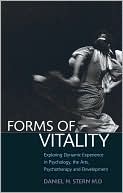Category Books
- Fiction Books & Literature
- Graphic Novels
- Horror
- Mystery & Crime
- Poetry
- Romance Books
- Science Fiction & Fantasy
- Thrillers
- Westerns
- Ages 0-2
- Ages 3-5
- Ages 6-8
- Ages 9-12
- Teens
- Children's Books
- African Americans
- Antiques & Collectibles
- Art, Architecture & Photography
- Bibles & Bible Studies
- Biography
- Business Books
- Christianity
- Computer Books & Technology Books
- Cookbooks, Food & Wine
- Crafts & Hobbies Books
- Education & Teaching
- Engineering
- Entertainment
- Foreign Languages
- Game Books
- Gay & Lesbian
- Health Books, Diet & Fitness Books
- History
- Home & Garden
- Humor Books
- Judaism & Judaica
- Law
- Medical Books
- New Age & Spirituality
- Nonfiction
- Parenting & Family
- Pets
- Philosophy
- Political Books & Current Events Books
- Psychology & Psychotherapy
- Reference
- Religion Books
- Science & Nature
- Self Improvement
- Sex & Relationships
- Social Sciences
- Sports & Adventure
- Study Guides & Test Prep
- Travel
- True Crime
- Weddings
- Women's Studies
Forms of Vitality: Exploring Dynamic Experience in Psychology and the Arts »

Authors: Daniel N. Stern
ISBN-13: 9780199586066, ISBN-10: 0199586063
Format: Hardcover
Publisher: Oxford University Press, USA
Date Published: July 2010
Edition: (Non-applicable)
Author Biography: Daniel N. Stern
Daniel N. Stern is a prominent psychiatrist and psychoanalytic theorist, specializing in infant development. He is the author of a number of books on the subject, notably The Interpersonal World of the Infant (1985). Daniel N. Stern started his training at Harvard University in 1956. He continued his educational career in medicine after which he worked in this field for several years. In 1964, Stern decided to specialize in psychiatric care, and in 1972 he started a psychoanalytic education at Columbia University Center for Psychoanalytic Training and Research . For more than thirty years he has worked in research and practice as well in developmental psychology and psychodynamic psychotherapy . In his research he dedicated his time to the observation of infants and to clinical reconstruction of early experiences. His efforts contribute to currently existing developmental theories. He is well known as an expert researcher of early affective mother-child bonding.
Book Synopsis
In his new book, eminent psychologist - Daniel Stern, author of the classic The interpersonal world of the infant, explores the hitherto neglected topic of "vitality" - that is, the force or power manifested by all living things.
Vitality takes on many dynamic forms and permeates daily life, psychology, psychotherapy and the arts, yet what is vitality? We know that it is a manifestation of life, of being alive. We are very alert to its feel in ourselves and its expression in others. Life shows itself in so many different forms of vitality. But just how can we study this phenomenon? Till now, this has been a topic considered impervious to any kind of scientific study, but according to the Stern, it is possible to trace vitality to real physical and mental operations— including movement, time, perception of force - as well as spatial aspects of the movement and its underlying intention. Within this fascinating book he shows how an understanding of vitality can help the psychotherapeutic process (including a look at the developmental origins of forms of vitality) and looks at how these theories of vitality might fit with our current knowledge of the workings of the brain.
Truly a tour de force from a brilliant clinician and scientist, Forms of Vitality is a profound and absorbing book - one that will be essential reading for psychologists, psychotherapists, and those in the creative arts.
Table of Contents
INTRODUCTION AND BACKGROUND
1. Introducing ''Forms of Vitality''
2. The Nature and Conceptual Framework of ''Forms of Vitality''
3. Ideas from Psychology and Behavior Leading to the Notion of Dynamic Forms of Vitality
THE ROLE OF THE AROUSAL SYSTEMS, AND THE EXAMPLES OF MUSIC, DANCE, THEATRE AND CINEMA
4. A Neuroscientific Basis for Dynamic Forms of Vitality: The Arousal Systems
5. Forms of Vitality in Music, Dance, Theatre and Cinema
DEVELOPMENTAL AND CLINICAL IMPLICATIONS
6. When do Dynamic Forms of Vitality Begin?: A Developmental View
7. What Implications do Forms of Vitality have for Psychotherapeutic Theory and Practice.
Subjects
 Health
Health  Healthy Living
Healthy LivingSelf Improvement
 Personal Growth
Personal Growth  Success, Motivation & Self - Esteem
Success, Motivation & Self - EsteemSelf Improvement
 Psychological Self-Help
Psychological Self-Help  Psychological Self - Help - General & Miscellaneous
Psychological Self - Help - General & MiscellaneousSelf Improvement
 See All
See All  Self - Improvement
Self - Improvement
